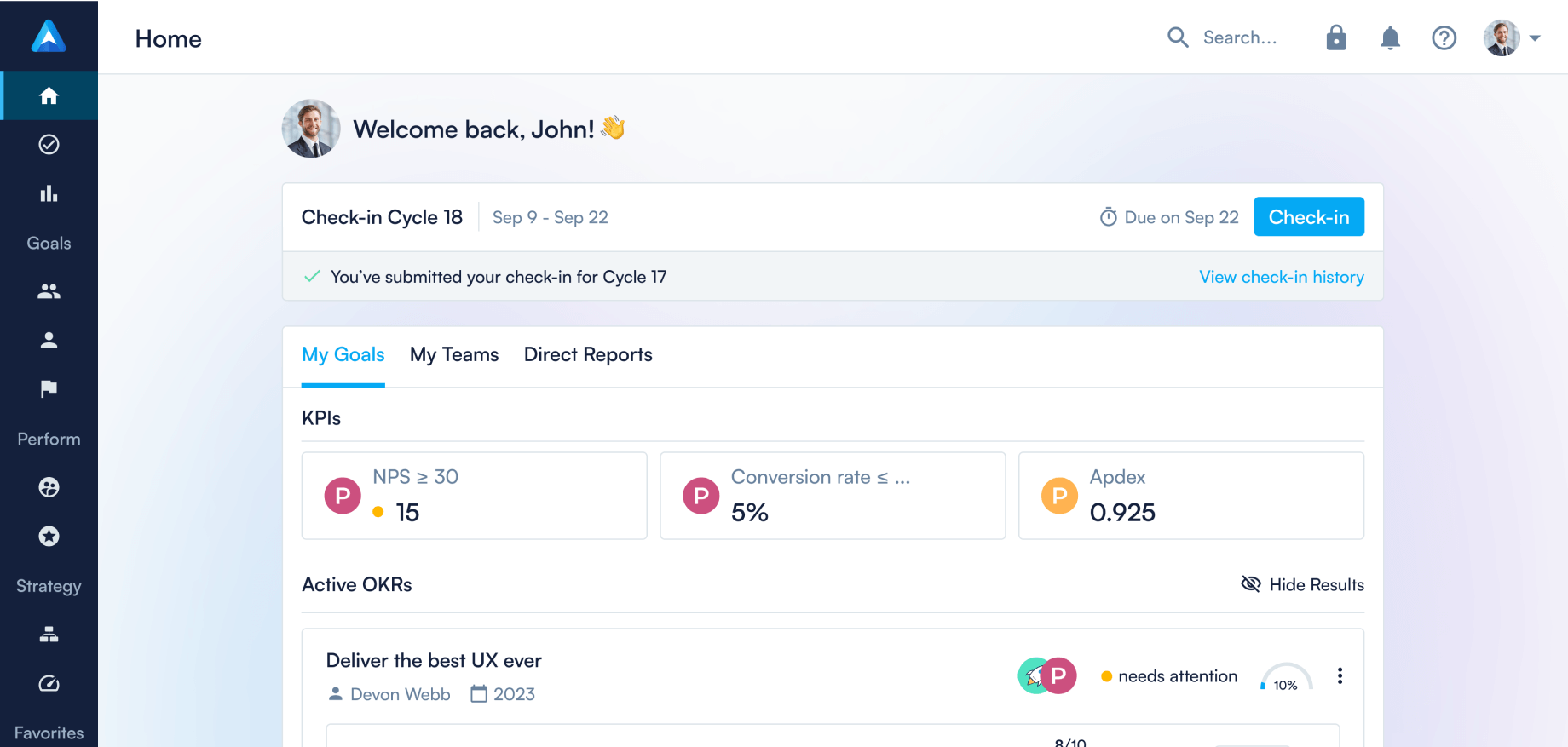
How LEDCity manages strategy execution to set them apart as leaders

In the vibrant landscape of technological innovation, LEDCity is a pioneer, redefining the way we approach energy-efficient lighting solutions. LEDCity’s commitment to innovation, efficiency, and strategic alignment (through tools like OKRs, KPIs, and Perdoo) sets them apart as leaders in the intelligent lighting space.
Read on to learn more about their business and how they redefine industry standards.
What does LEDCity do and how did it come into existence?
LEDCity is a Swiss company, founded in 2017 by Patrik Deuss and Florian Gärtner-Wyniger. The idea for LEDCity was developed during Patrik’s Bachelor’s Thesis when he was looking for an area where there was still much potential for energy savings.
Patrik found that 11% of a building’s energy consumption is wasted due to lighting as buildings constantly leave lights on, even when no one is around or the sun is providing enough light.
It turns out that technologies such as motion sensors aren’t as effective as you’d think. Modern alternatives exist, but they are difficult to use and cannot precisely control light intensity and duration.
To solve this problem, we developed the world's most efficient lighting system: it’s easy to install, extremely flexible, data-driven and can save up to 80% energy compared to LED systems — while maintaining 100% comfort.
What problem is LEDCity solving, and who are you solving that problem for?
The climate and recent energy crisis have created an increasing need to reduce energy consumption. Additionally, the continued economic uncertainty puts companies under pressure to reduce costs. Lighting alone accounts for 30% of a building's electricity costs — highlighting the immense potential for energy-efficient and intelligent lighting systems.
LED technology alone does not solve the problem. The formula E = P * t, where energy consumption is a product of electrical power (P) and time (t), shows a limitation in reducing electrical power only by LED. However, the real physical opportunity lies in optimizing the power and time factor to achieve significant energy and cost savings.
LEDCity’s intelligent lighting system in a commercial building does two things to exemplify savings:
- Instead of lights remaining on from sunrise to sunset, the luminaires at the entrance of a building are only activated when someone approaches, then dim down or turn off as they enter the elevator.
- For night owls working late, only the lights at and around their desk remain illuminated, while the rest of the office lights dim to conserve energy.
The technology is meant to help asset managers in the real estate sector looking to increase the value of their buildings and meet ESG targets. Thanks to a modular approach with a manufacturer-independent standard, our intelligent light sources can be easily used in existing lamp holders — making it simple and cost-effective. Due to substantial energy savings, LEDCity’s installations typically yield a return on investment within a short span of 2-3 years. Since real estate asset managers have a long-term perspective, they recognize the value and benefit of such solutions.
What makes LEDCity stand out from its competition?
Motion detector systems invented over 40 years ago control light inaccurately and sluggishly. Other intelligent lighting systems consist of multiple separate parts (ie. sensors, power supply, drivers, switches, and luminaires) requiring expensive wiring and high programming efforts to set them up.
On the contrary, to ensure a seamless lighting experience, LEDCity’s light sources integrate all necessary components and communicate wirelessly with each other. We specialize in commercial buildings, utilizing scalable networks to seamlessly integrate thousands of luminaires.
Instead of solely concentrating on lighting, we also offer our customers comprehensive sensor data that can be leveraged to automate and optimize processes. LEDCity doesn’t only provide an energy-efficient lighting solution but also the foundation for comprehensive computer-aided facility management.
What impact is LEDCity creating and how do you measure this?
LEDCity’s impact lies in both the energy savings achieved by installed lighting systems and the added value our solutions bring to our clients. The integration of intelligent light sources and luminaires can accurately quantify the amount of energy, and consequently CO2 emissions, saved. For instance, the luminaires installed in 2023, will save a reduction of 18,480 tons of CO2 over their lifetime. To put that into perspective: that's equivalent to charging a Tesla two million times!
What tools and processes does LEDCity use to execute strategy and achieve important business goals?
To successfully scale and reach our ambitious goals, we saw the need for a method to break down long-term plans into small, achievable steps. When implementing OKR, we quickly saw its benefits: more focus, less inefficiency, and higher accountability throughout our company, which previously hindered our ability to achieve strategic goals and adapt to changing circumstances. OKRs provided a structured approach to address these crucial issues.
To manage and keep track of our strategy, OKRs, and KPIs, we implemented Perdoo. We started with the top-level goal to save as much energy as a power plant produces and we devised three strategic pillars with the key areas of people, product, and impact to guide us over the next few years. From there, we set annual targets that connect LEDCity's various departments and serve as the foundation for each team's quarterly OKRs. Each department provides monthly insights to the whole team. They present the development of overall KPIs such as revenue, inbound leads, or eNPS but also the progress of their OKRs, meaning quarterly projects such as implementing a new tool, preparing for an event, or refining a process. Although those updates are presented monthly, each employee can independently check the progress of every team at any moment thanks to Perdoo.
Every week, managers and employees exchange information about their advancements in the so-called PPPP meeting. PPPP is the abbreviation for Personal, Progress, Plan, and Problems and helps managers structure formal exchanges with their employees. Thereby, Perdoo doesn’t only support strategy execution and OKR management, but also PPPP as it stores key KPI data as well. Additionally, each department and team has developed its unique way of communication, such as daily stand-ups or bi-weekly exchanges.
How is Perdoo supporting LEDCity’s journey?
As a fast-growing company, LEDCity needs to prioritize well and stick to its strategy. Perdoo helps us by making sure all employees know and understand the company’s strategy, and by creating clarity around each team’s most important goals. All of this supports us in keeping track of our desired performance.
Another major advantage is that every employee can see how they contribute to the company goals and what colleagues in other departments are working on. Since the common goals are so clearly visualized, it inspires the departments to work collaboratively and start cross-functional projects to reach the overarching company targets.
We also found that the platform offers time-saving benefits, especially for preparing meetings. For instance, instead of having to prepare a presentation for our monthly company meeting, we simply go through each department’s KPIs and OKRs and explain where we stand.
Curious to see how Perdoo can help your organization realize its ambitions? Sign up for your free account here.
FAQ
Continue reading...


Why you shouldn’t outsource OKR to HR


How to embed goals in performance reviews







